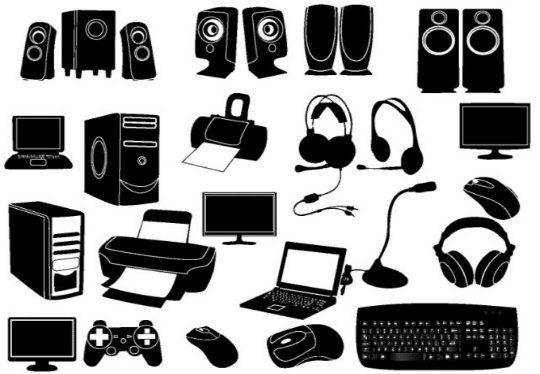Table of Contents
Why you need this article
As more and more users migrate from Mac to PC, we have seen a steep incline of problematic 3rd party peripherals. Devices such as hubs, docking stations, external drives or NAS, and even displays. Thunderbolt especially can be challenging to work with and daisy chaining devices often compounds the problem. It's important to make sure the devices you are bringing over are not just certified to work with Apple products but with Microsoft as well.
"This worked perfectly on my Mac, why doesn't it work on my new, high end PC?"
Basically, compatibility and certifications.
Compatibility and Certifications
When it comes to hardware compatibility, it always seems like a cable or peripheral device purchased for a Mac is more functional and stable. Truth is, that's usually the case, but for a very interesting reason. In order to be able to sell a product that is 'Certified for Apple' a manufacturer must go through some very stringent hoops and Apple frequently shuts down an unofficially supported manufacturer with lawsuits and stop-actions whereas Microsoft performs far fewer checks, has less requiring stipulations, and rarely enforces their 'certified' licensing. As such, most users that purchase a peripheral for an Apple device are generally met with an officially supported product that works flawlessly and Apple even often includes driver support in their OS. If you are buying directly from Apple there is zero chance the product won't be supported. Conversely, when a user purchases a 'Supported by Windows' product there is a higher chance Microsoft has never even heard of it (can you even buy 3rd party accessories directly from Microsoft?)
What this means for you?
It means it's even more important that you check a products compatibility before purchasing a new computer or peripheral. You can verify the product is supported using a tool from Microsoft: Certified Products
The list is comprehensive but you'll notice that many products are not supported in the most recent versions of Windows 10 and instead only in older versions. This can make it very challenging to find a product that you can be certain will work in Windows.
Problems Caused
There are a litany of issues an unsupported device can experience ranging from minor to VERY severe, to the point where it can either debilitate or completely ruin your workflow. Some common ones we have seen:
- Inconsistent connectivity
- Complete inability to connect
- Slow speeds/Poor performance
- Specific port inconsistency (works in one port but not others)
- Reduced functionality (i.e. some keys on keyboards don't work, some monitors won't display full resolution)
- Update can kill device operation entirely
- Device function stops when other devices are connected
This is a small list of the possible problems you could run into if using an unsupported device. The most important thing you can do before purchasing a new product for your PC is checking to make sure it is fully supported in your version of Windows using the 'Certified Products' link above. Even simple products. There are so many to choose from there's usually a version of the product you want that will work with your system.
Problems Solved!
While problems like the above can present when using 3rd party peripherals, in Windows 10 they are frequently easy to resolve. If the product is supported by Microsoft, nine times out of ten it's just a simple driver that needs to be downloaded. Check the peripheral manufacturers site for an up to date driver.
If the manufacturer doesn't offer a current driver for that particular product then it's probably not officially supported and should probably be replaced it.
Since Windows has so many ways to customize and adjust settings robustly, there is sometimes an effective solution for resolving after a quick internet search. For example: "Logitech M333 mouse" not working in Windows 10 1903. Just insert your product in the quoted section.
– Mice can have trouble with particular power settings (in BIOS or Windows)
– Externals drives have issues with formatting
– Hubs and docking stations can be a nightmare but most include drivers for Windows 10 🙂
– Displays might just need a different cabling setup or a very specific resolution/refresh rate combination
Ask your Puget Support Rep if you're not able to solve, we can usually help find the solution or point you in the right direction to find the answer.
Typical Manufacturer Support Site
Conclusion
Moving to PC from another environment can be stressful enough! Reduce the stress by making sure your peripherals will work right out of the gate and being ready with some solutions if they don't. For the most part a quick internet search will provide a solution but it's also important to check for product support with Microsoft before you purchase a new peripheral.
Rest easy, if we provide it, it's certified to work with Windows 🙂 We perform extensive testing on all the products we carry to make sure they are fully compatible and stable which is why we offer full support on all of our hardware, including peripherals! If you run into issues, don't hesitate to reach out to our Support Department. Check out the video below for a better understanding of what we do and why.
Need help with your Puget Systems PC?
If something is wrong with your Puget Systems PC, we are readily accessible, and our support team comes from a wide range of technological backgrounds to better assist you!
Looking for more support guides?
If you are looking for a solution to a problem you are having with your PC, we also have a number of other support guides that may be able to assist you with other issues.
